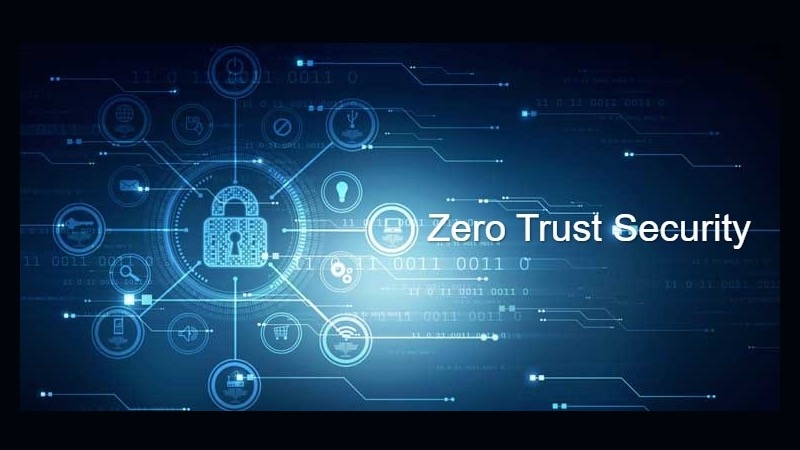
Zero Trust operates on the principle of “never trust, always verify.” This means continuously authenticating and vetting users, devices, data, and services. This also limits the “blast radius” if a breach does occur and reduces attack surfaces that attackers can leverage.
Learn how ZTNA enables secure remote access for your hybrid workforce. This includes remote work, third-party applications, and M&As.
Access is based on identity
Zero Trust is a security model that eliminates the trusted-untrusted distinction. Instead of relying on perimeter-based technologies, the security model authenticates and authorizes access based on identity, context, and device posture. The result is that only a verified, trusted connection is allowed into the network, with any other links blocked until further validation is complete.
Zero-trust solutions are designed to meet the requirements of a hybrid and remote workforce. Unlike traditional VPNs and firewalls, they provide a seamless end-user experience without sacrificing security.
For example, with a zero trust network access solution, employees can connect to work applications on any device from anywhere. This is made possible by a continuous authentication process that assesses and verifies the device and user throughout the session. This allows employees to work on BYOD devices and cloud services without remembering multiple passwords or accounts. This also prevents common risks such as password recycling or sharing. In addition, Zero Trust provides complete visibility of all users and their activities in the network. This allows an agency to enforce access policies based on least access and micro-segmentation.
Access is based on context
Zero Trust is a security framework that requires all users, whether inside or outside the network, to be authenticated and authorized before being granted access to systems and applications. That’s why the identity and access management (IAM) technology that helps you keep track of user accounts and permissions is a core component of zero Trust.
IAM can challenge a user’s login credentials based on context, like the location they are logging from or their device and patch levels, to trigger multi-factor authentication (MFA) types that require them to answer a question, enter a one-time code or verify with a fingerprint. These checks are designed to improve account security and prevent attackers from moving laterally within the network after gaining initial entry through a compromised system.
To support these types of contextual access, a zero-trust solution must also include network micro-segmentation and continuous authentication. This approach ensures that the policies are applied regardless of where workloads communicate and enable them to be protected without needing a change in architecture. This is important because most workloads are now hosted outside the corporate network.
Access is based on policy
Zero Trust assumes that attackers are on the outside and inside, so users and devices should be considered hostile until proven otherwise. This means access to data and applications is granted per session, with granular policy-based verification and multi-factor authentication.
The security model also enforces least-privilege access, meaning users have only the permissions they need to carry out a specific task. This makes it harder for hackers to infiltrate the network.
Finally, the security model uses micro-segmentation to monitor and regulate traffic, with a gateway at the edge of each segment. This gateway applies security measures, such as a Layer 7 firewall and the Kipling method, to thoroughly vet user and device entry. This includes assessing six questions about who, what, when, where, why, and how to determine whether an attempt is valid. It also enforces dynamically changing security policies, continuously reassessing risk to prevent threats, and automating responses. This approach provides a highly secure, secure, and efficient user experience without VPNs.
Access is based on the device
Zero trust network access is a security solution that creates a logical boundary around an application set, hiding them from discovery and restricting access to a specific list of known participants. It verifies identity, context, and policy adherence before granting access and prevents lateral movement across the enterprise, significantly reducing the surface area for attack.
The key to deploying ZTNA is identifying the resources that need protection and how they are typically accessed. This includes determining which devices people use to connect and how those devices are managed or unmanaged. In addition, a granular visibility and reporting capability is critical to ensure the architecture can verify and monitor activity in real time.
Zero Trust is a more secure alternative to VPNs and other remote access solutions because it enforces strict verification procedures before trusting a device and application. It also incorporates the principle of least privilege and continuous monitoring of users, applications, networks, and machines to limit the “blast radius” in case of an external or internal breach. Look for a vendor that offers an agent-based and a service-based ZTNA solution so you can choose the option that meets your needs.
Access is based on location
Zero Trust takes a more proactive approach to cybersecurity by preventing unauthorized users from accessing critical systems, data, or infrastructure. This starkly contrasts the traditional network security model, which followed a “trust but verify” approach that often-granted full access after authentication, leaving organizations vulnerable to internal threat actors using compromised credentials and lateral movement across the enterprise.
Zero Trust solutions are designed to prevent these types of attacks by combining the threat detection and protection capabilities of endpoint detection and response (XDR) with security orchestration, automation, and response (SOAR) – all backed by a world-class managed threat detection and remediation service. This allows organizations to deploy Zero Trust faster, reduce their attack surface and minimize the impact of any breaches.
Zero Trust can be deployed as a secure remote work solution and as part of an overall security service edge that includes other functionality such as software-defined wide area networks (SD-WAN), cloud access security brokers, secure web gateways, and firewall-as-a-service. Gartner refers to this as a Security as a Service Edge (SASE).
